
Tunable diode laser absorption spectroscopy (TDLAS) is combined with an extreme learning machine (ELM) model, tailored by genetic algorithm (GA) parameter searching, to produce a more robust analytical method for trace gas analysis of ethylene.


Tunable diode laser absorption spectroscopy (TDLAS) is combined with an extreme learning machine (ELM) model, tailored by genetic algorithm (GA) parameter searching, to produce a more robust analytical method for trace gas analysis of ethylene.

A 2009 study found many heavy metals in pet food. Has anything changed?

Test firing a firearm is frequently used for forensic firearms and bullet identification. Airborne lead-containing particles are emitted when a firearm is tested, leading to lead building up on surfaces, exposing employees to potential lead-related health risks. Prior to cleaning, lead surface concentrations in the firing range at the National Forensic Laboratory Services in Ottawa were found to be higher than the Environmental Abatement Council of Ontario (EACO) post-abatement limit, with the highest level 56 times the limit. Inductively coupled plasma–mass spectrometry (ICP-MS), along with internal standardization, revealed that wiping surfaces with either a commercial decontamination product containing ethylene glycol butyl ether (EGBE) or alcohol cleaning pads satisfied the EACO standard by removing over 90% of lead from test surfaces whereas an external cleaning company only removed 36% of lead from the same surfaces. Fortunately, lead cross-contamination was minimal outside the firearms section and well below the residential EACO limit.

Tobias Konz of Nestlé Research, Lausanne, Switzerland and various associates have developed and validated what they describe as a reliable, robust, and easy-to-implement quantitative method for multielemental analysis of low-volume samples. The ICP-MS-based method comprises the analysis of 20 elements (Mg, P, S, K, Ca, V, Cr, Mn, Fe, Co, Cu, Zn, Se, Br, Rb, Sr, Mo, I, Cs, and Ba) in 10 μL of serum and 12 elements (Mg, S, Mn, Fe, Co, Cu, Zn Se, Br, Rb, Mo, and Cs) in less than 250,000 cells, and involved the analysis of elemental profiles of serum and sorted immune T cells derived from naıv̈e and tumor-bearing mice. The results indicate a tumor systemic effect on the elemental profiles of both serum and T cells. Konz and his colleagues believe their approach highlights promising applications of multielemental analysis in precious samples such as rare cell populations or limited volumes of biofluids that could provide a deeper understanding of the essential role of elements as cofactors in biological and pathological processes. Konz spoke to us about this work.

Combined with appropriate selection of instrument components to reduce the sulfur background, ICP-MS using MS/MS with oxygen reaction cell gas can provide accurate low-level analysis of sulfur and sulfur isotope ratios in aqueous and organic matrices. This is useful in applications in life science, clinical research, pharmaceutical development, food safety, environmental monitoring, geochemistry, and petrochemistry.
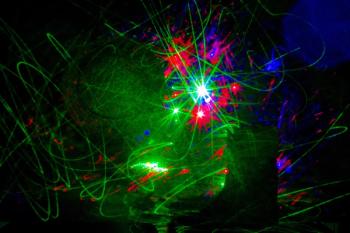
Metallomics seeks to understand the metallobiochemistry of cells and organisms in health and disease. This article explains the principle of laser ablation–inductively coupled plasma–mass spectrometry (LA-ICP-MS) for imaging applications and highlights its potential to provide additional insights in bioanalysis and metallomics.

For a number of elements, spectroscopic interferences can have a significant impact on the ability to achieve low detection limits in ICP-MS. We investigate the mechanisms in multi-quadrupole ICP-MS that are designed to remove these interferences.

Inductively coupled plasma–atomic emission spectroscopy (ICP-AES) relies on the use of a peristaltic pump for sample introduction. Here, two conventional peristaltic pumps are compared with a new pump based on the “easy click” principle for the analytical figures of merit.

Single-cell analysis is important in biology and medicine, because it takes into account cell heterogeneity and cellular dynamics, which are governed by cellular crosstalk and the vicinity of cells. Thus, it is of utmost importance to obtain not only information about the heterogeneity of a cell population, but also about their spatial arrangement.
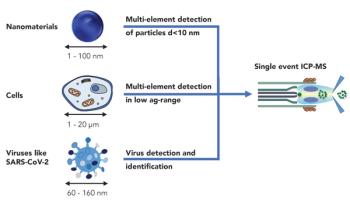
Nanomaterials have a tremendous impact on our daily life, but usually in a beneficial way because of their useful properties.

Single-particle inductively coupled plasma–mass spectrometry (spICP-MS) is becoming widely used to measure the number of nanoparticles (or other submicrometer– sized particles) per mL with a particular elemental chemical composition and the average particle size (diameter) or particle size distribution.

There is no doubt that funding for basic science in analytical atomic spectroscopy has waned over the years, and, in reality, barely exists today.

Although not as widespread in terms of units used worldwide as quadrupole-based inductively coupled plasma–mass spectrometry (ICP-MS) equipment, also multicollector ICP-MS (MC-ICP-MS) instrumentation has revolutionized many fields.

In celebration of Spectroscopy’s 35th Anniversary, leading experts discuss important issues and challenges in analytical spectroscopy.

In celebration of Spectroscopy’s 35th Anniversary, leading experts discuss important issues and challenges in analytical spectroscopy.
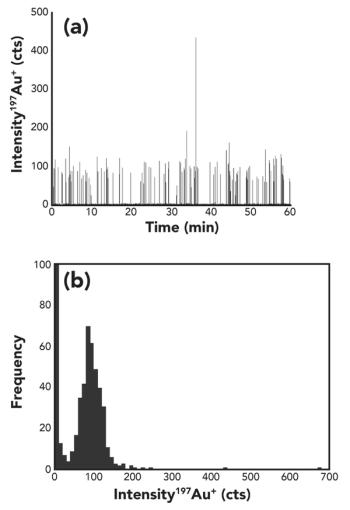
Analysis of the compositional variation in living cells is essential for understanding biological processes. Single-cell elemental analysis by triple-quadrupole ICP-MS is emerging as a selective, highly sensitive, and potentially high-throughput technique for the study of constitutive elements, and uptake of metallodrugs (or metal-containing nanomaterials) in single cells.
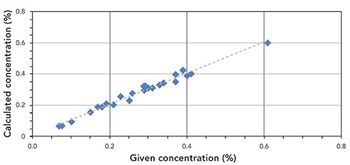
New excitation developments and advanced detector technology enable the use of EDXRF for multielement analysis of plant material and fertilizers, with improved detection limits and reduced measurement time. These features are combined with easy sample preparation and low cost of investment.

A laminar flow box for sampling is combined with a positive voltage on the skimmer cone to reduce detection limits to pg/L concentrations in ICP-MS. These improvements reduce the risk of contamination and increase the efficiency of ion sampling and focusing.
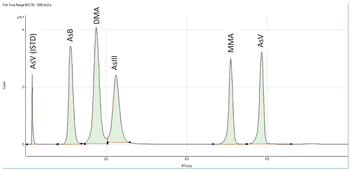
An arsenic speciation method using LA–ICP-MS was developed to provide a more accurate procedure for the determination of arsenic species in marine oils. It was validated for the analysis of five arsenic species in krill oil, and should also prove useful when quantitating inorganic arsenic species in other marine oils.

Method setup and optimization steps are explored to illustrate how an ICP-MS/MS method can be defined and tested to ensure consistent performance. Users can benefit from improved interference removal performance without the complex method development inherent in the use of ion-molecule reaction chemistry
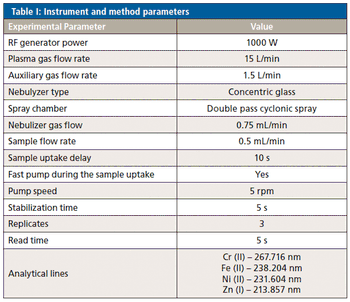
A simple analytical method, requiring no sample pretreatment, was developed for determination of chromium, iron, nickel, and zinc in mouthwash by inductively coupled plasma‒optical emission spectrometry (ICP-OES). This method allowed the study of potential migration by iron, chromium, and nickel from stainless steel containers.
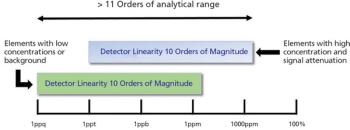
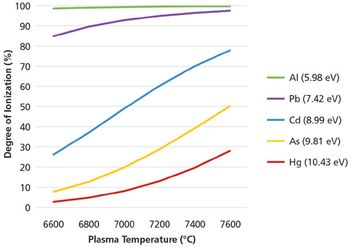

Complex isobaric and polyatomic spectral interferences can be mitigated using triple quadrupole ICP-MS (ICP-MS/MS) with a collision–reaction cell (CRC). This configuration allows for the multielement characterization and detection of smaller nanoparticle sizes.

The challenge of tackling neurogenerative diseases like Parkinson’s and Alzheimer’s leads researchers to study the role of metals, for which atomic spectroscopy tools have become essential. Dominic Hare, the 2019 winner of the Emerging Leader in Atomic Spectroscopy award, presented by Spectroscopy, is a forerunner in the use of laser ablation-inductively coupled plasma-mass spectrometry (LA-ICP-MS) to image metals in biological tissue as part of the work to improve our fundamental understanding of neurodegenerative diseases. He recently spoke to us about this work. The award will be presented to Hare at The European Winter Conference on Plasma Spectrochemistry (EWCPS), in Pau, France, February 3-8, 2019.